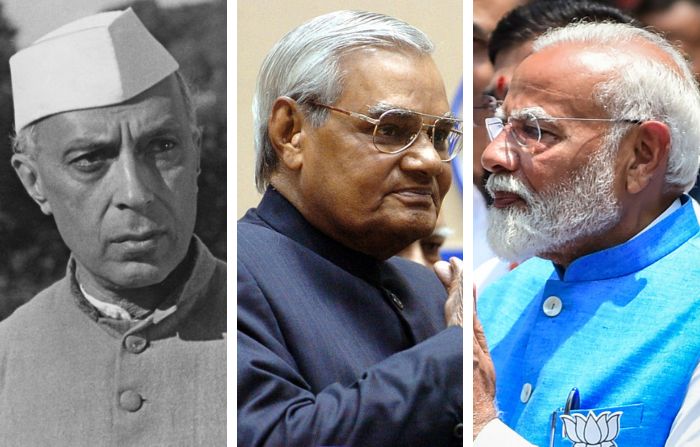- Thursday, April 03, 2025
India’s first prime minister Jawaharlal Nehru had secured massive mandates in three straight elections besides the first BJP PM Atal Bihari Vajpayee, who had held office after three polls but could complete term once.

By: Shubham Ghosh
INDIAN prime minister Narendra Modi on Tuesday (4) emerged victorious, albeit with a reduced margin, in the recently held general elections. The win would mean the Bharatiya Janata Party (BJP) leader will get to serve his third successive term after 2014 and 2019.
It is a rare feat in India’s pluralist democracy where getting a majority mandate is tough. Only two other leaders before Modi managed to emerge as the prime minister after a general election thrice on a row and only one of them could go on get a majority mandate on all three occasions.
Jawaharlal Nehru, India’s first prime minister who served between 1947 and 1964, had won secured massive mandate in the first three elections that independent India held — in 1951-52, 1957 and 1962. His party, the Congress, won 364 of 489 parliamentary seats in the first election held in 1951 and 1952. The Communist Party of India (CPI) had the second-highest number of seats — 16.
In the second general election in 1957, Nehru’s Congress swept again, clinching 371 out of 494 seats. The CPI came second again, this time with 27 seats.
Read: Coalition era returns in Indian politics: Can Modi do a Vajpayee?
In the third election in 1962, the Congress’s seat number dipped by 10 but yet it was a massive majority and the party finished with 361 out of 494 seats. The CPI finished second yet again with 29 seats.
Nehru, however, could not complete his term and passed away in May 1964, just two years after getting elected for the third successive term.
Atal Bihari Vajpayee was the second Indian leader who became the prime minister for consecutive three times after general elections. However, Vajpayee’s BJP did not get a decisive mandate like Nehru’s Congress and he could complete his five-year tenure only once out of the three opportunities that he got.
Read: Two cricket World Cup winners elected to Indian parliament
Vajpayee became the prime minister for the first time in 1996 when his Hindu nationalist party could win only 161 out of 543 seats in the parliament. The second-largest party was the Congress with 140 seats. Vajpayee became the PM but he could not survive more than just 13 days as he failed to cobble up the numbers to get a majority in the parliament.
India faced two years of unstable government and went to elections once again in 1998. This time, too, Vajpayee emerged as the prime minister with the BJP getting 182 out of 543 seats, still a far cry from the majority mark of 272. This time, the NDA was formed a few months after the polling that allowed Vajpayee to stay in governance. But one of his allies from southern India, J Jayalalithaa, withdrew support that led to the collapse of the government in 13 months. The Congress finished as the second-largest party with 141 seats.
Vajpayee proved lucky in his third term when his BJP again emerged as the single largest party with the identical tally of 182 seats while the Congress was at the second position with 114. However, the NDA managed to get a majority and Vajpayee lasted the full term till 2004, becoming the first prime minister outside the Congress to achieve the feat.
While Vajpayee became the prime minister after three successive elections, his mandates were never a majority ones and the successive elections that were held were more out of desperation to get a decisive verdict.
Modi won his first mandate in 2014 when his own BJP won 282 seats and the NDA went on to capture 336 seats. Five years later, the BJP’s seat number even got better to reach 303 and the NDA ended up with 351 seats.
The Congress had a disastrous result in these two elections, getting only 44 and 52 seats, respectively, to finish as the second-largest party.